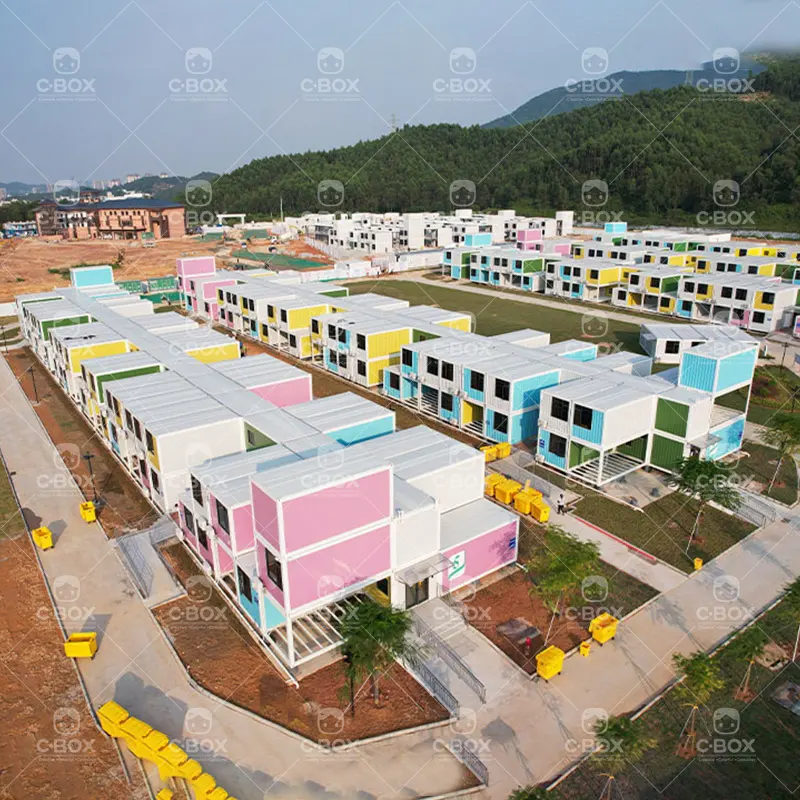Changes In Demand For Integrated Housing In The International Market

The rise of industrialized housing started from the industrialized housing in the United States in the 1930s, and initially existed as a branch business of garages. After 180 years of development, it has now been developed in various market applications and forms around the world. In the 1950s, some European countries set off a high tide of residential industrialization, which spread throughout European countries in the 1960s and expanded to economically developed countries such as the United States, Canada, and Japan. The European, American and Japanese markets have all experienced a transformation process in quantity and quality. The development scale and industry concentration have reached a high level, the rental business is huge, and highly integrated and comfortable box-type modular houses dominate. At present, the development of mobile houses abroad is changing in two aspects: first, with the industrialization of house manufacturing, mobile houses have developed from temporary buildings to permanent buildings; second, because the urbanization process of major mobile house producing countries such as Japan, the United States and France has ended, and the peak period of large-scale construction has passed, the application scope of mobile houses has expanded from the temporary construction market to business, commerce, tourist villas and other fields. Mobile houses are increasingly used in office buildings, shops, laboratories, industrial plants, schools, kindergartens, sanatoriums, hospitals, tourist villas, motels, hotels, restaurants and civil residences.
China's integrated housing market is huge
Since the reform and opening up, my country's economy has developed rapidly, and large-scale urbanization construction is underway. This process will continue for 20 to 30 years. During this period, various fields and industries are in a high-development stage. In the construction process of a large number of permanent buildings, structures, roads, bridges and transportation facilities, and in the future use process, a large number of temporary buildings are needed to match them. In addition, in industries that require long-term field work and open-air work, in times of emergency, disaster relief, tourism, and peak festival traffic, temporary houses that meet different requirements are needed. Therefore, various temporary buildings came into being. With the progress of the times, the improvement of working conditions, and the need to build a harmonious society, the country has high requirements for the safety, applicability and improvement of living conditions of temporary buildings. As temporary buildings, mobile houses are used in many engineering construction sites. At the same time, with the improvement of design and manufacturing levels, the safety and comfort of mobile houses have gradually improved, and the use concept of mobile houses has gradually been recognized by the society, and the utilization rate has greatly increased. Therefore, my country's prefabricated houses have maintained a strong market demand for a long time, and this process is expected to continue for a long time.
Temporary buildings have the largest demand
At present, the domestic temporary buildings vary from industry to industry. The market with the largest demand for prefabricated houses is the temporary buildings in the construction industry and urban rail transit construction sites, which are used for workers' dormitories, offices, canteens and warehouses. In the past, the northern region used simple sheds built with small angle steel tents, and then improved to cement board houses composed of 2-3 layers of small angle steel bars and cement boards; the south used bamboo sheds; and the long-term outdoor open-air operations required multi-purpose container-type prefabricated houses. Now more and more light steel structure composite houses are used. The use of light steel structure composite houses in temporary houses at construction sites in Beijing construction projects has increased year by year, and currently accounts for more than half of the total; in Guangdong Shenzhen construction sites and urban rail transit construction sites, almost all temporary houses are light steel structure composite houses. The demand for the above-mentioned temporary buildings is large and increasing year by year. It is a fairly large market, but safety and quality accidents occur from time to time. In fact, China's residential industrialization has not yet begun. Drawing on international development experience and combining the various markets that China needs to guide, how to obtain development opportunities will be a challenge and opportunity that industry enterprises will face.

